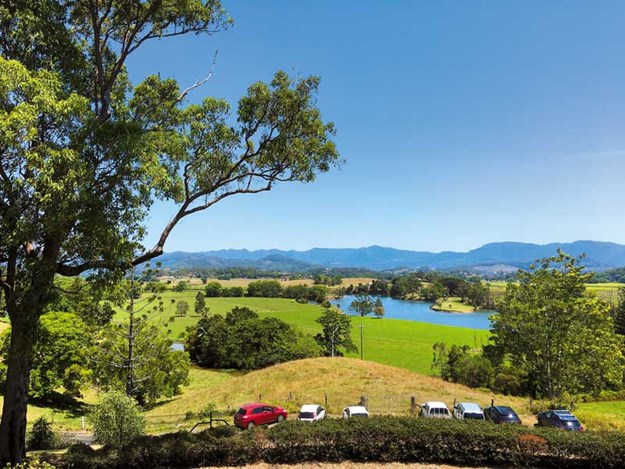 |
The Tweed River winding its way to the ocean |
Like a tiny dinosaur, a lizard rose up on its hind legs and ran for its life across the road. A short distance further on, a small grey wallaby bounced away out of danger, and flying foxes darted past the windscreen so close we instinctively ducked. At night, the hinterland of the Australian Gold Coast is a lively place.
Thousands of New Zealanders can’t be wrong - the coast is an excellent spot for a sunny sojourn - but if you tire of the beaches, the hoopla and the shopping, head for the hills of the hinterland. They are not far away and if you can do this in a motorhome so much the better.
Bluffs and buttresses
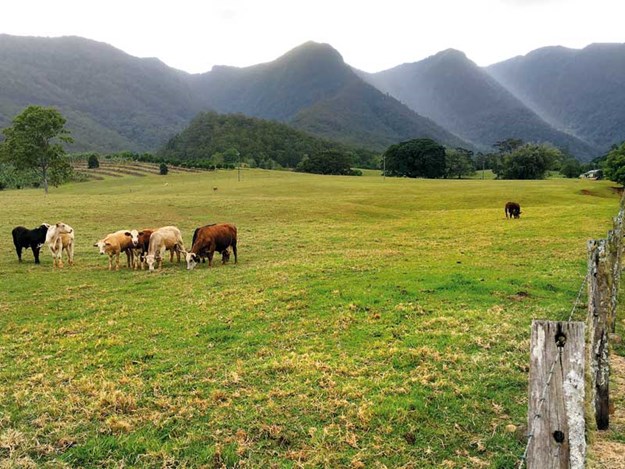 |
Forested ravines radiate down from the volcanic rim in the Limpinwood Valley, which is named for a long-forgotten amputee |
It a surprise to anyone whose image of Australia is of a flat and sunburnt land that this large area straddling the border between Queensland and New South Wales is a collection of bluffs and buttresses encircling the biggest erosion caldera (collapsed volcanic crater) in the Southern Hemisphere.
The edges of the soaring slopes that make up this volcanic rim drop 1000m to the basin - the caldera - that is the Tweed Valley, and they are covered in the most extensive array of subtropical rainforests left on Earth. The area has been divided into the vast national parks of Border Ranges, Springbrook, Nightcap and Lamington in Queensland.
A lifetime of exploration
You could spend a lifetime in this area and never fully explore it. On a 10-day visit, it was a matter of pick and choose. One gateway to caldera country is the small town of Murwillumbah.
Just half an hour’s drive from Coolangatta, it cleaves to the banks of the Tweed River and is surrounded by the sugarcane fields of the Northern Rivers district of New South Wales.
We booked into the Greenhills camping ground on the outskirts of town, which is a basic but convenient spot from which to explore. Murwillumbah has surviveddevastating fires, floods and Australia’s largest bank robbery (1978).
Eccentric lives
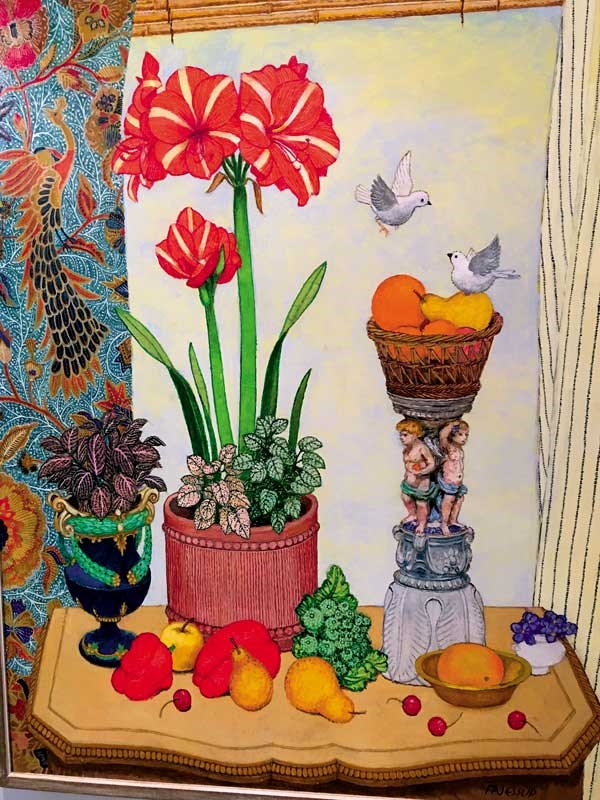 |
A painting by renowned still-life artist Fred Jessup |
Today the town is best known for a significant modern art gallery, which houses works from throughout Australia and explores the connection in art and life between Fred Jessup and Margaret Olley. Both were notable Australian artists who shared their lives and an obsession for still-life paintings.
Margaret was strikingly eccentric and her extraordinary home, crammed with the subjects of her art, has been reconstructed in the gallery exactly as it was the day she died. There is also plenty of eccentricity in the villages of the caldera. It has more offspring of the hippie culture than anywhere else in Australia.
The movement was spawned by a counterculture festival held in the village of Nimbin in the 1970s, after which thousands of freespirited idealists leapt into their Kombis and headed for the coast and the lush hinterland of northern New South Wales to set up their versions of Utopia.
Some of these communities still survive, boosted by the bohemians who decamped from Byron Bay as it became infiltrated by celebrities and cashed-up city-slickers. In the tiny hill village of Tyalgum, for instance, are the communes of the Hermes and the Water People.
Try to find out about them, and the only answers are beatific but zippered smiles. Hippie hangovers in the caldera villages of Uki, Tyalgum, Chillingham, Nimbin and Mullumbimby still linger, evidenced by whiffs of incense, musty book shops, organic vegetables and rag-tag collections of second- (or third-) hand clothing, crystals and collectibles.
Tacked to the communal notice board in Uki were invitations to join the ‘loose groove’ drumming vessels, a moon ‘gong bath’ or a session of ‘open-flow ecstatic dance’. As if to underpin these images, down the footpath came a tall figure in a sweeping coat of purple and pink.
He had a long grey Father Time beard. The rest of his hair was pulled back in a knot at the back of his head, and he viewed the world, quite literally, through rose-coloured spectacles.
Changes ahead
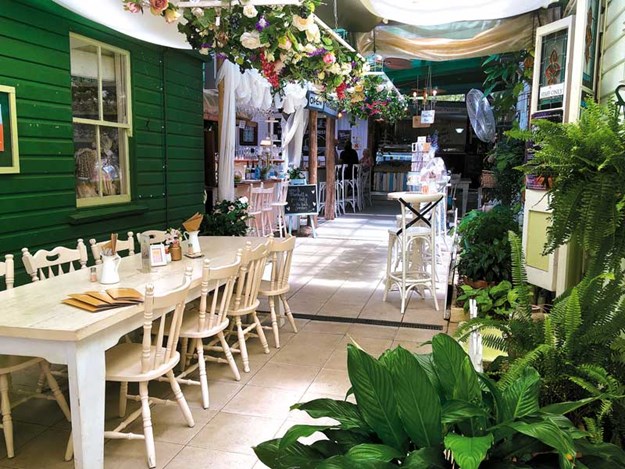 |
Flutterbies, Tyalgum |
With the gradual pull of tourism, I fear that the zany character of these scattered hamlets will soon change. In the rumpled little village of Tyalgum, for example, it was quite a shock to discover behind a flossy café called Flutterbies a ‘marketta’ of little lanes and outlets containing the sort of flotsam you might find in a Brisbane bazaar.
And there in the main street was a genuine gelato ice-cream bar run by an Italian man and only open at the weekend. Uki has the smart new Mount Warning pub built along traditional lines to replace the old one that burnt down.
Roads of discovery
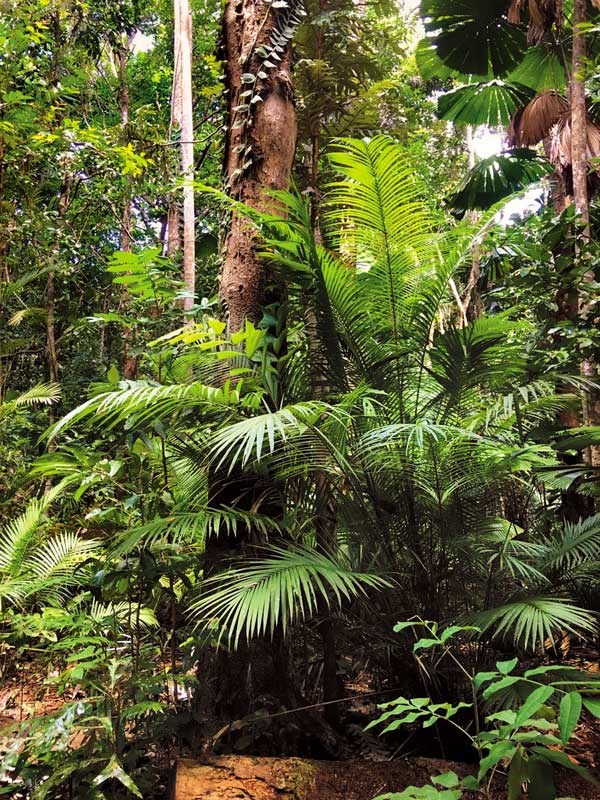 |
The mountainous rim of an ancient volcano is covered by one of the largest arrays of rainforest left on Earth |
Linking these haunts is a network of tortuous narrow roads, which means driving is as good as arriving. Fluffy camphor laurel trees and smooth-trunked eucalypts cram the edges and form shady tunnels of foliage. Bean trees are festooned with long black pods hanging like deflated balloons, and jacarandas in full bloom add splashes of electric blue.
Slap bang in the middle of the caldera, and seen from almost every angle, a 1156m-high volcanic plug looms like a wagging finger. Captain Cook spotted it from his ship in 1770 and called it Mount Warning to alert future navigators of the offshore reefs he was encountering off the coast.
The local Bundjalung people call it Wollumbin (cloud catcher), and as the current drought in the caldera The mountainous rim of an ancient volcano is covered by one of the largest arrays of rainforest left on Earth A painting by renowned still-life artist Fred Jessup worsens, inhabitants are praying it will be faithful to its name.
For the Bundjalung people, the mountain is a spiritual force. As happened around the recently closed Uluru, Aboriginal leaders are clamouring for tourists to stop defiling this hallowed ground by climbing to its summit. I needed no persuading.
Apart from respect for ancient lore, it is an arduous three-hour climb. Campers, RVers and others intent on clambering up the massif spend the night in the well-appointed Mt Warning Rainforest Park in the foothills. Mount Wollumbin is the first spot in Australia to greet the sun, and a popular ritual is to be on the peak by dawn.
Even for sybarites, the mountain is an inescapable presence. From roads, laybys, shopping centres and camping grounds all around the caldera, its protruding profile catches the eye. Also eye-catching is the alternative drive back to the Gold Coast over mountain ridges as spectacular as film sets for The Lord of the Rings.
The border between NSW and Queensland is defined by the edge of the caldera escarpment. Eventually, the road descends through the farmland and green pastures of the Numinbah Valley. If there is time, follow any track into the rainforest’s embrace and find yourself in another world.
Gigantic vines loop and tangle through towering trees and a myriad of leaf shapes and shadows close in and cut off the outside. Countless ferns and foliage drip down from heavy boughs to meet the jungle floor in an intricate embroidery of contrasting greens. Back on the Gold Coast, the sophisticated buildings and man-made trappings seem diminished by comparison





